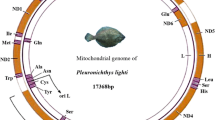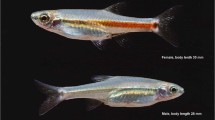Abstract
Until now, only the complete mitochondrial genome (mtDNA) of Pelecanus occidentalis and Pelecanus crispus have been sequenced. In order to explore the characteristics of mtDNA of the two Pelecanidae species and analyze their phylogenetic relationship, the two mtDNA were compared with Ciconia ciconia as reference. The mtDNA of the P. occidentalis and P. crispus were determined with the size of 17, 286 bp and 16, 131 bp, respectively. Both sequences contain 13 protein-coding genes, 22 tRNA genes, and two rRNA genes. Gene of P. occidentalis and P. crispus are in the same arrangement and show positive AT skew and negative GC skew. There are some differences in intervals and overlap regions between the two species. The phylogenetic analysis show that the P. occidentalis and P. crispus grouped one branch and the relationship of Pelecanidae birds, Ciconiiformes birds and Spheniscifomes birds is relative. The study provid more genetic information for P. occidentalis and P. crispus, which is beneficial to the protection of them.



Similar content being viewed by others
REFERENCES
Dyall, S.D., Brown, M.T., Johnson, P.J., Ancient invasions: from endosymbionts to organelles, Science (New York), 2004, vol. 304, no. 5668, pp. 253—257.
Ye, N., Wang, X.L., Li, J., et al., Assembly and comparative analysis of complete mitochondrial genome sequence of an economic plant Salix suchowensis, Peer J., 2017, vol. 5. e3148.
Greenjohn, C. and Reed, D.R., Mitochondria and apoptosis, Science, 1998, vol. 281, no. 5381, pp. 1309—1312.
Cao, X.T. and Qin, Y., Mitochondrial translation factors reflect coordination between organelles and cytoplasmic translation via mTOR signaling: implication in disease, Free Radical Biol. Med., 2016, vol. 100, pp. 231—237.
Andersson, S.G.E., Zomorodipour, A., Andersson, J.O., et al., The genome sequence of Rickettsia prowazekii and the origin of mitochondria, Nature, 1998, vol. 396, no. 6707, pp. 133—140.
Mu, C.Y., Chen, Y., Wang, B., et al., Completely sequencing and gene organization of the Anser cygnoides mitochondrial genome, J. Agric. Biotechnol., 2014, vol. 22, no.12, pp. 1482—1493.
Huang, Z.H., and Liu, N.F., Advances in mitochondrial genome size variation in animals, Life Sci. R., 2010, vol. 14, no. 2, pp. 166—171.
Boore, J.L., Animal mitochondrial genomes, Nucleic Acids Res., 1999, vol. 27, no. 8, pp. 1767—1780.
Boore, J.L., Medina, M., and Rosenberg, L.A., Complete sequences of the highly rearranged molluscan mitochondrial genomes of the scaphopod Graptacme eborea and the bivalve Mytilus edulis, Mol. Biol. Evol., 2004, vol. 21, no. 8, pp. 1492—1503.
Kumazawa, Y., Ota, H., Nishida, M., et al., Gene rearrangements in snake mitochondrial genomes: highly concerted evolution of control-region-like sequences duplicated and inserted into a tRNA gene cluster, Mol. Biol. Evol., 1996, vol. 13, no. 9, pp. 1242—1254.
Helfenbein, K.G., Fourcade, H.M., Vanjani, R.G., et al., The mitochondrial genome of Paraspadella gotoi is highly reduced and reveals that chaetognaths are a sister group to protostomes, Proc. Natl. Acad. Sci. U.S.A., 2004, vol. 101, no. 29, pp. 10639—10643.
Qiu, Y., Song, D.X., Zhou, K.Y., et al., The mitochondrial sequences of Heptathela hangzhouensis and Ornithoctonus huwena reveal unique gene arrangements and atypical tRNAs, J. Mol. Evol., 2005, vol. 60, no. 1, pp. 57—71.
Haring, E., Kruckenhauser, L., Gamauf, A., et al., The complete sequence of the mitochondrial genome of Buteo buteo (Aves, Accipitridae) indicates an early split in the phylogeny of raptors, Mol. Biol. Evol., 2001, vol. 18, no. 10, pp. 1892—1904.
Johnsenl, A., Kearns, A.M., Omland, K.E., et al., Sequencing of the complete mitochondrial genome of the common raven Corvus corax (Aves: Corvidae) confirms mitogenome-wide deep lineages and a paraphyletic relationship with the Chihuahuan raven C. cryptoleucus, PLoS One, 2017, vol. 12, no. 10. e0187316.
http://www.wlf.louisiana.gov/oilspill/actions. Accessed November 19, 2010.
Nesbitt, S.A., Williams, L.E., McNease, L., et al., Brown pelican restocking efforts in Louisiana, Wilson Bull., 1978, vol. 90, no. 3, pp. 443—445.
Blus, L., Cromartie, E., McNease, L., and Joanen, T., Brown pelican: population status, reproductive success, and organochlorine residues in Louisiana, 1971—1976, Bull. Environ. Contam. Toxicol., 1979, vol. 22, pp. 128—135.
Shields, M., Pelecanus occidentalis, no. 609 in The Birds of North America Online, Poole, A., Ed., Ithaca: Cornell Lab. Ornithol. http://bna.birds.cornell.edu/bna/species/609. Accessed June 15, 2012.
Vander, P.S.S., Anderson, D.W., Jodice, P.G.R., et al., East versus West: organic contaminant differences in Pelecanus occidentalis eggs from South Carolina, USA and the Gulf of California, Mexico, Sci. Total Environ., 2012, vol. 438, pp. 527—532.
Shi, H.Q., Liu, N.F., Cao, L., et al., Status of the East Asian population of the dalmatian pelican Pelecanus crispus: the need for urgent conservation action, Bird Conserv. Int., 2008, vol. 18, pp. 181—193.
Huang, T., Wang, Y.H., Zhou, L.B., et al., Complete mitochondrial genome of Pelecanus crispus and its phylogeny, Mitochondrial DNA, Part B, 2019, vol. 4, no. 2, pp. 3075—3076.
IUCN, The IUCN Red List of Threatened Species, 2017, vol. 3. http://www.iucnredlist.org.
Huang, T., Peng, J., Zhao, Y.L., et al., The complete mitochondrial genome of Pelecanus occidentalis (Pelecaniformes: Pelecanidae) and its phylogenetic analysis, Mitochondrial DNA, Part B, 2018, vol. 3, no. 2, pp. 782—783.
Gibb, G.C., Kennedy, M., and Penny, D., Beyond phylogeny: pelecaniform and ciconiiform birds, and long-term niche stability, Mol. Phylogenet. Evol., 2013, vol. 68, no. 2, pp. 229—238.
Zhang, L.Q., Wang, L., Gowda, V., et al., The mitochondrial genome of the Cinnamon Bittern, Ixobrychus cinnamomeus (Pelecaniformes: Ardeidae): sequence, structure and phylogenetic analysis, Mol. Biol. Rep., 2012, vol. 39, no. 8, pp. 8315—8326.
Chen, C.J., Chen, H., Zhang, Y., et al., TBtools: an integrative toolkit developed for interactive analyses of big biological data, Mol. Plant, 2020, vol. 13, no. 8, pp. 1194—1202.
Li, C.Y., Zhao, Y.L., Xu, Z.G., et al., Initial characterization of the chloroplast genome of Vicia sepium, an important wild resource plant, and related inferences about its evolution, Front. Genet., 2020, vol. 11, p. 73.
Kumar, S., Stecher, G., and Tamura, K., MEGA7: Molecular Evolutionary Genetics Analysis version 7.0 for bigger datasets, Mol. Biol. Evol., 2016, vol. 33, no. 7, pp. 1870—1874.
Librado, P. and Rozas, J., DnaSP v5: a software for comprehensive analysis of DNA polymorphism data, Bioinformatics, 2009, vol. 25, no. 11, pp. 1451—1452.
Zhang, S.X., Yang, L., and Yang, J.X., On the modern avian taxonomy and phylogenetics, Zool. Syst., 2004, vol. 29, no. 4, pp. 675—682.
Zheng, X.N., Zheng, N., Zhang, Y., et al., New progress avian molecular phylogenetics, J. Beijing Norm. Univ., Nat. Sci., 2011, vol. 47, no. 1, pp. 54—58.
Lee, W.J., Conroy, J., Howell, W.H., et al., Structure and evolution of teleost mitochondrial regions, J. Mol. Evol., 1995, vol. 41, no. 1, pp. 54—66.
Funding
This work was supported by National Natural Science Foundation of China (U20A20118), Major Science and Technology Program of Hunan Province (2017NK1014), Key Technology R&D Program of Hunan Province (2016TP2007; 2016TP1014; 2017TP2014) and Natural Science Foundation of Hunan Province (2019JJ40012).
Author information
Authors and Affiliations
Corresponding author
Ethics declarations
Conflict of interest. The authors declare that they have no conflict of interest. Statement on the welfare of animals. All applicable international, national, and/or institutional guidelines for the care and use of animals were followed.
APPENDIX
APPENDIX
Rights and permissions
About this article
Cite this article
Shuangye, W., Yunlin, Z., Zhenggang, X. et al. The Complete Mitochondrial Genome Comparison between Pelecanus occidentalis and Pelecanus crispus. Russ J Genet 57, 1073–1081 (2021). https://doi.org/10.1134/S102279542109012X
Received:
Revised:
Accepted:
Published:
Issue Date:
DOI: https://doi.org/10.1134/S102279542109012X




